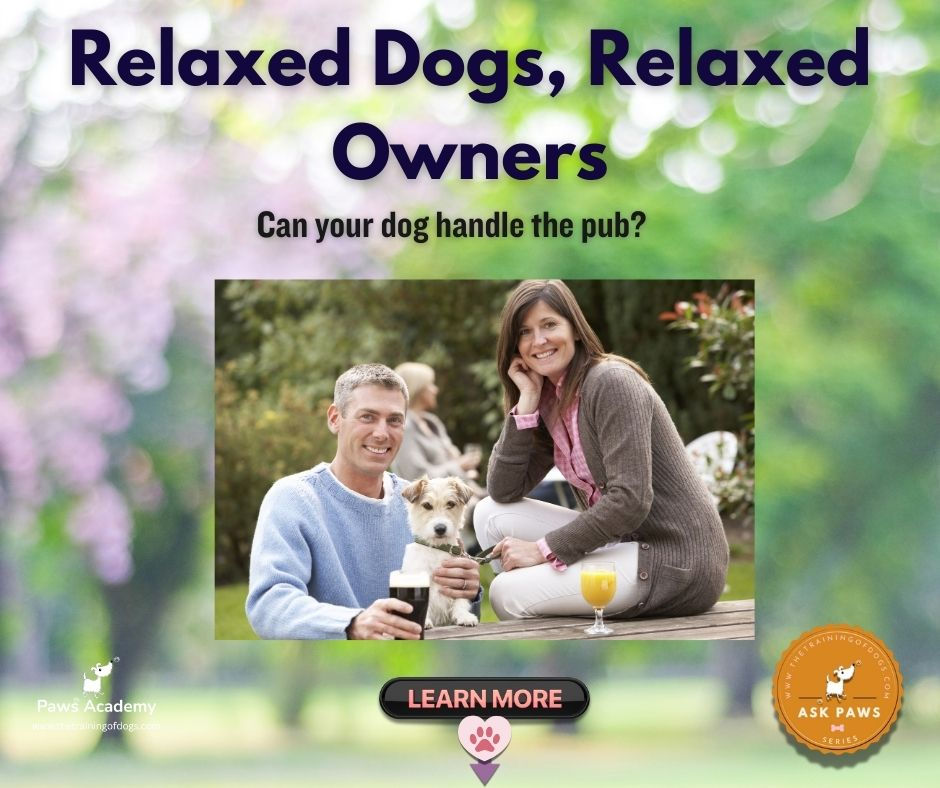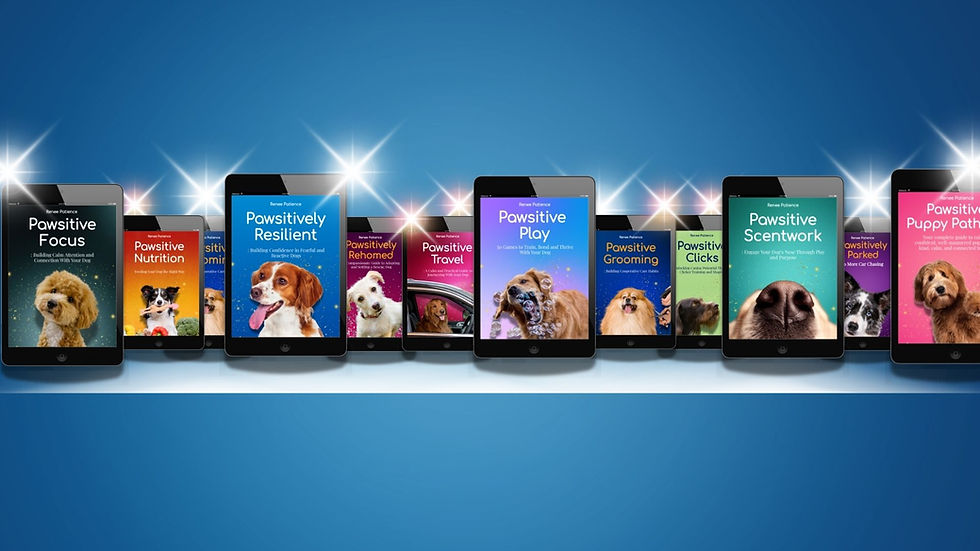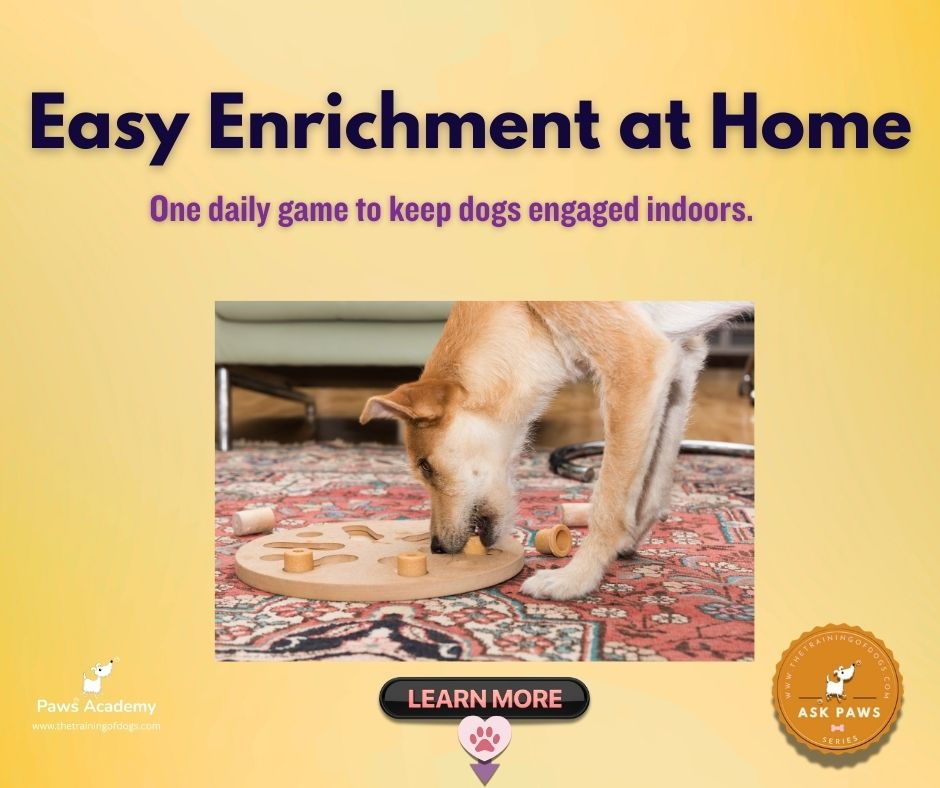What If Your Dog Could Go to the Pub and Relax?
- Paws Academy

- Aug 27
- 6 min read

You’ve just settled into a quiet table in your favourite pub. A pint in hand, good company, maybe some chips on the way. And curled at your feet, without a fuss, is your dog. Not pacing, not whining, not pulling at the lead. Just there, relaxed. Content. Easy.
Sounds ideal, doesn’t it? But for most people, taking their dog to the pub is anything but. It can quickly become stressful, loud, and chaotic. You spend more time managing your dog than enjoying your drink. So, what if it could be different?
This isn’t about turning dogs into perfectly mannered little robots. It’s about what’s realistic, what’s fair, and how you can work towards creating a dog who can cope in those situations. Not just cope, but actually relax.
Let’s talk about what it would really look like if your dog could go to the pub and relax. And how to make it possible, if it suits your dog at all.
Dogs in Pubs: A Growing Trend with Mixed Results
Across Ireland, the UK, and beyond, dog-friendly cafes and pubs are becoming more common. But “dog-friendly” doesn’t always mean “dog-appropriate”. For some dogs, a noisy space filled with smells, movement, and strangers is simply too much.
We’ve seen it ourselves. The pacing, the barking, the pulling toward every person who passes. The dogs who can’t settle and the owners who are doing their best to enjoy a moment out while quietly wondering if they should have left the dog at home.
And to be clear, this is not bad behaviour. It is usually a mismatch between what the environment demands and what the dog is actually ready for.
Let’s Get Honest: Not Every Dog is a Pub Dog
It’s easy to think that a well-behaved dog should be able to go anywhere. Many people feel that bringing their dog along more often will improve their behaviour in public places.
But inclusion should never come at the cost of comfort. That applies to your dog as much as it does to anyone else.
Some dogs are never going to enjoy the pub. That’s not a problem. It just means they are different. Dogs who are noise-sensitive, easily overwhelmed, or going through a developmental phase may not have the capacity to enjoy that kind of environment.
Rather than forcing it, it helps to ask yourself one thing. Is this something my dog would choose for themselves? If not, staying home might be the kindest option.
What Relaxed Actually Looks Like
A relaxed dog isn’t just one who isn’t barking. A dog who is frozen still, overly alert, or simply enduring the experience is not relaxed.
We’re aiming for a dog who:
Has a loose, comfortable body posture
Is breathing normally
Can lie down and stay down
Is curious but not overwhelmed by their surroundings
Can switch off and disengage
If your dog is unable to do these things in a calm space at home, they are very unlikely to manage it in a busy pub.
Before the Pub: Training That Matters
It’s natural to want a dog who can behave well in public. But that confidence does not begin in a pub or cafe. It begins in your own home, and in places where your dog already feels safe.
Start with simple foundations.
Settle training is key. Help your dog understand that lying down and doing nothing is a skill in itself. Use a mat or bed at home, then slowly bring that habit into different environments. Reward them for being still. You are not waiting for them to lie down by chance. You are helping them learn that stillness is valuable.
Teach stillness and duration. Many dogs, especially younger ones, are used to short bursts of activity. The idea of resting for ten minutes or more can be uncomfortable at first. Keep sessions short and successful. Build up slowly.
Keep expectations realistic. If your dog can’t settle for five minutes at home, they’re not ready for the pub. You wouldn’t take a beginner swimmer into the deep end and expect them to float. Start where they can succeed.
Choosing the Right Venue
Not all pubs are equal when it comes to dogs. Even if they allow dogs, the environment might not suit your particular dog.
Look for places that are:
Quieter during the time you plan to go
Spacious enough that you won’t be squeezed in next to others
Flexible about where you sit
Not already full of other dogs
Try your first visit during a quieter time. A midweek afternoon is often a safe bet. Give your dog space and time to observe before expecting them to settle.
What to Bring
Don’t expect your dog to just sit still with no support. You wouldn’t ask a child to sit through a meal with no toys or snacks. Dogs need some help too.
Pack:
A mat or blanket from home
A long-lasting chew or food puzzle
Water in a spill-proof bowl
A short lead with no give
A calm attitude and flexible plans
The mat can be a powerful tool. With regular training, it becomes a signal. It tells your dog, “this is where you rest now”. This type of consistency can give your dog more confidence in unfamiliar spaces.
Listen to What Your Dog is Telling You
Your dog is always giving you feedback. Sometimes it is obvious, like barking or pulling. But often, it is more subtle.
Watch for signs like:
Lip licking without food present
Yawning that doesn’t follow a nap
Tense posture
Restlessness or constantly changing position
Refusal of food they would usually eat
These are early signs of discomfort. If you notice them, it may be time to give your dog more space or take a break. Ignoring these signals can lead to bigger problems later on.
The Pub is Not a Training Opportunity
If your dog is already struggling, the pub is not the right place to teach them new skills. Learning happens best when the environment supports focus and calm.
Use your training time elsewhere. Your outings should be used to reinforce what your dog already knows, not to test their limits.
If you treat the pub as a classroom, you’ll likely both leave stressed. If you treat it as a reward for previous learning, you have a better chance of success.
What Success Looks Like
We’ve worked with many owners who thought their dog could never manage a pub visit. Over time, and with thoughtful training, those same dogs now nap under tables, gently take treats, and stay relaxed in public.
This kind of success is not about control. It’s about trust, preparation, and meeting your dog where they are. The dog learns they are safe, the owner learns to observe more closely, and both get to enjoy the result.
It won’t happen in a week. But if it’s possible for your dog, and you take the time to prepare, the results are worth it.
Not Every Dog Wants to Join In
There is no rule that says a dog must enjoy social spaces to be well-behaved. Some of the most well-trained dogs we know would never cope in a pub, and that’s not a failure.
Dogs are individuals. What works for one may be completely inappropriate for another.
There are plenty of other ways to involve your dog in your life. Long walks, quiet coffee stops, training games, or time spent at home. Choose what works for both of you, not what looks good on social media.
Questions to Ask Yourself
Still unsure if the pub is right for your dog?
Ask yourself:
Does my dog find new environments exciting or stressful?
Can they settle at home with light distractions?
Do they tolerate people moving near them without reacting?
Am I bringing them because I think they want to come, or because I feel I should?
Answer honestly. Your dog will thank you either way.
Final Thoughts
The idea of taking your dog to the pub is appealing for many owners. But making that a positive experience takes more than just a lead and good intentions.
It takes preparation, realistic expectations, and a genuine understanding of your dog’s needs.
Some dogs will thrive in these spaces. Others won’t. Both are valid. What matters most is that your dog feels safe and supported, wherever they are.
So next time you’re heading out for a pint, ask yourself: Can my dog relax there? Not just behave. Truly relax.
If the answer is yes, you’ve done the work. If the answer is no, there is no shame in that either. You’ve made the right choice.
Curious about our Pawsitive Book Range? Explore our online store and discover titles designed to support your training journey, with up to 70% off for a limited time.
Click below to find out more:





